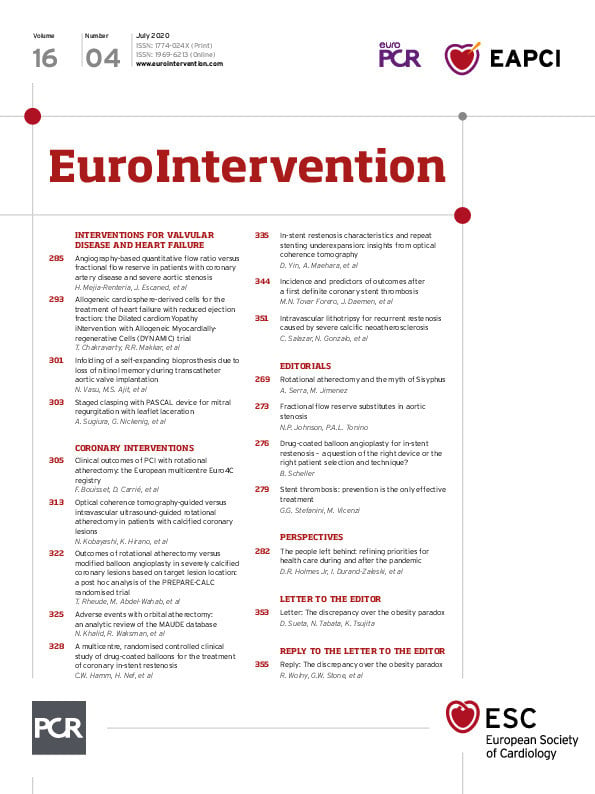
We appreciate the correspondence by Sueta et al1 regarding our manuscript2.
In their letter, Sueta and colleagues refer to the results of their analysis showing that the prior or current diagnosis of cancer is associated with increased risk of future cardiovascular events after percutaneous coronary intervention (PCI)3. The authors suggest that lower all-cause and non-cardiac post-PCI mortality in patients who are overweight or have class I obesity compared with normal weight individuals observed in our analysis might result from differences in the prevalence of cancer across the body mass index (BMI) subgroups and that expanding our analysis by adding the factor of malignancy would help to clarify the observed “obesity paradox”.
While we fully agree that unidentified and unmeasured confounders may explain this “obesity paradox”, currently there is little that we can add to the already presented data for several reasons.
First, limited life expectancy (usually <2 years) was an exclusion criterion in all the trials in our analysis, with the sole exception of ACUITY. Thus, most patients with advanced cancer were probably excluded from these studies. Unfortunately, the studies in our pooled analysis did not routinely ascertain the development of cancer after study entry. Thus, our study cannot be used for external validation of the findings by Sueta et al.
Second, our results are substantially different compared with the findings of Sueta et al3, who reported that, in non-cancer patients, BMI below the median was an independent risk factor for adverse cardiovascular outcomes (a composite of cardiovascular death, revascularisation, stroke, non-fatal myocardial infarction, and heart failure readmission). In our analysis, normal BMI was associated with higher all-cause mortality primarily due to greater non-cardiac mortality, without increased rates of cardiac death, myocardial infarction, revascularisation, or stent thrombosis compared with patients who were overweight or had class I obesity. While the reason for such discrepancy is not known, differences in patient selection and a much smaller sample size in the two studies (821 versus 22,922) might be important contributing factors.
Third, the hypothesis that malignancy is the underlying cause of the “obesity paradox” requires a higher prevalence of cancer in normal weight patients compared with those who are overweight and obese. This is unlikely given that obesity itself is a risk factor for multiple types of cancer, including, but not limited to, endometrial, oesophageal, colorectal, post-menopausal breast, prostate, and renal cancer4. Even in the study by Sueta et al3, the mean BMI in cancer versus non-cancer groups was fairly similar.
Finally, we cannot exclude that a higher prevalence of cancer did not contribute to the excess all-cause and non-cardiac mortality that we observed in underweight patients (<18.5 kg/m²) compared with normal weight individuals. However, given the low number of underweight patients (n=137; 0.5%) and formal exclusions of malignancy in the majority of the studies, this contention should be considered hypothesis-generating only.
Conflict of interest statement
The authors have no conflicts of interest to declare.
Supplementary data
To read the full content of this article, please download the PDF.

